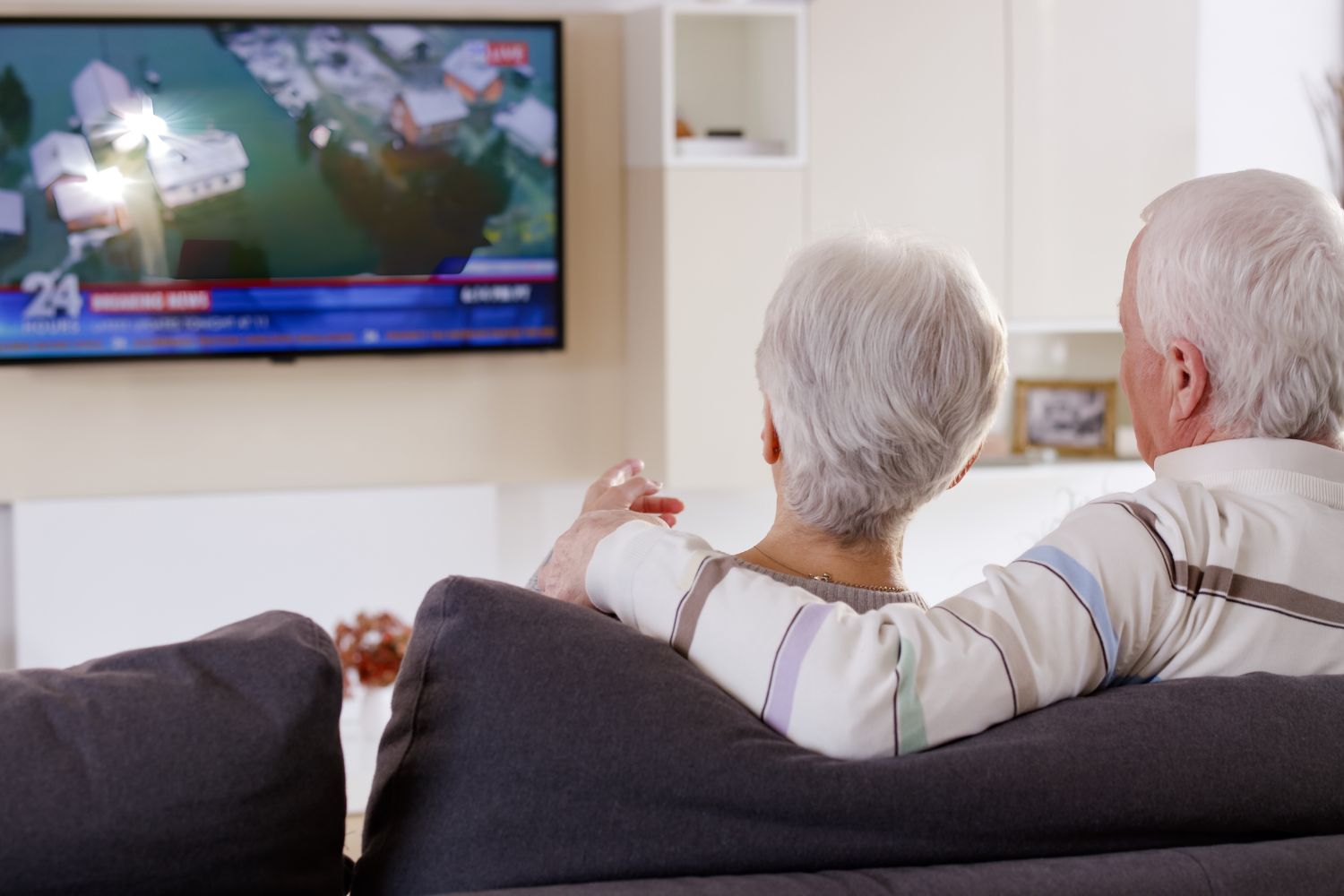
FREE SHIPPING ON PRECUT KIT ORDERS OF $100 OR MORE
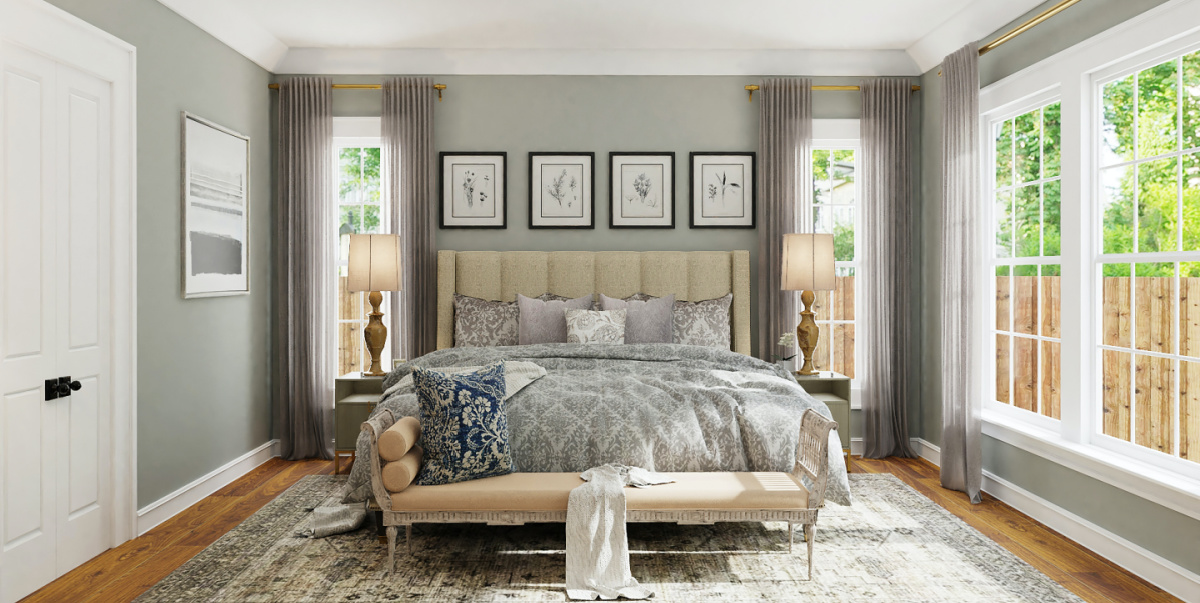
We all love the sun streaming in our windows to lend a bright and cheery atmosphere to our homes. But, depending on where you live, too much sun can make your home less energy efficient and cause high cooling bills. Energy efficient window treatments can help alleviate this issue.
And according to the U.S. Department of Energy (DOE), up to 30% of the need for heating and cooling in a home is due to heat passing through windows!! They also say,
“In cooling seasons, about 76% of sunlight that falls on standard double-pane windows enters to become heat. Window coverings can help with this loss of energy by providing comfort, regulating temperatures, and lowering energy bills. The exact savings will depend on the type of attachment, the season, the climate, and how the attachment is used.”
So, let’s take a look at your energy efficient window treatment options to get you saving energy and money!
An exterior energy efficient option, awnings are affixed to the house above a window similar to a small roof that provides cover and shade to the window.
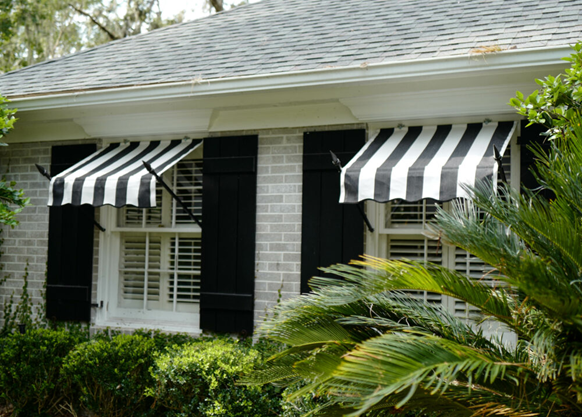
Awnings can be a permanent and fixed part of the home, or they can be added after you buy a home. There are also awning options that are retractable, so you don’t have to have them covering the windows 24/7.
The benefits of awnings are that, according to the DOE, they can reduce solar heat gain between 65% and 77%, depending on which way the window faces. They also protect the exterior envelope of the home that they cover – keeping rain away from window openings. And besides being practical, done right, awnings can add some curb appeal to a home.
There are some drawbacks to awnings that include:
Curtains are an interior type of energy efficient window treatments that often act as a part of an overall room’s design. They can be made of different materials, can have different lengths, and can be hung in different ways depending on the look the homeowner is trying to achieve. The main argument for curtains is the beauty they can add to a space as a design element.
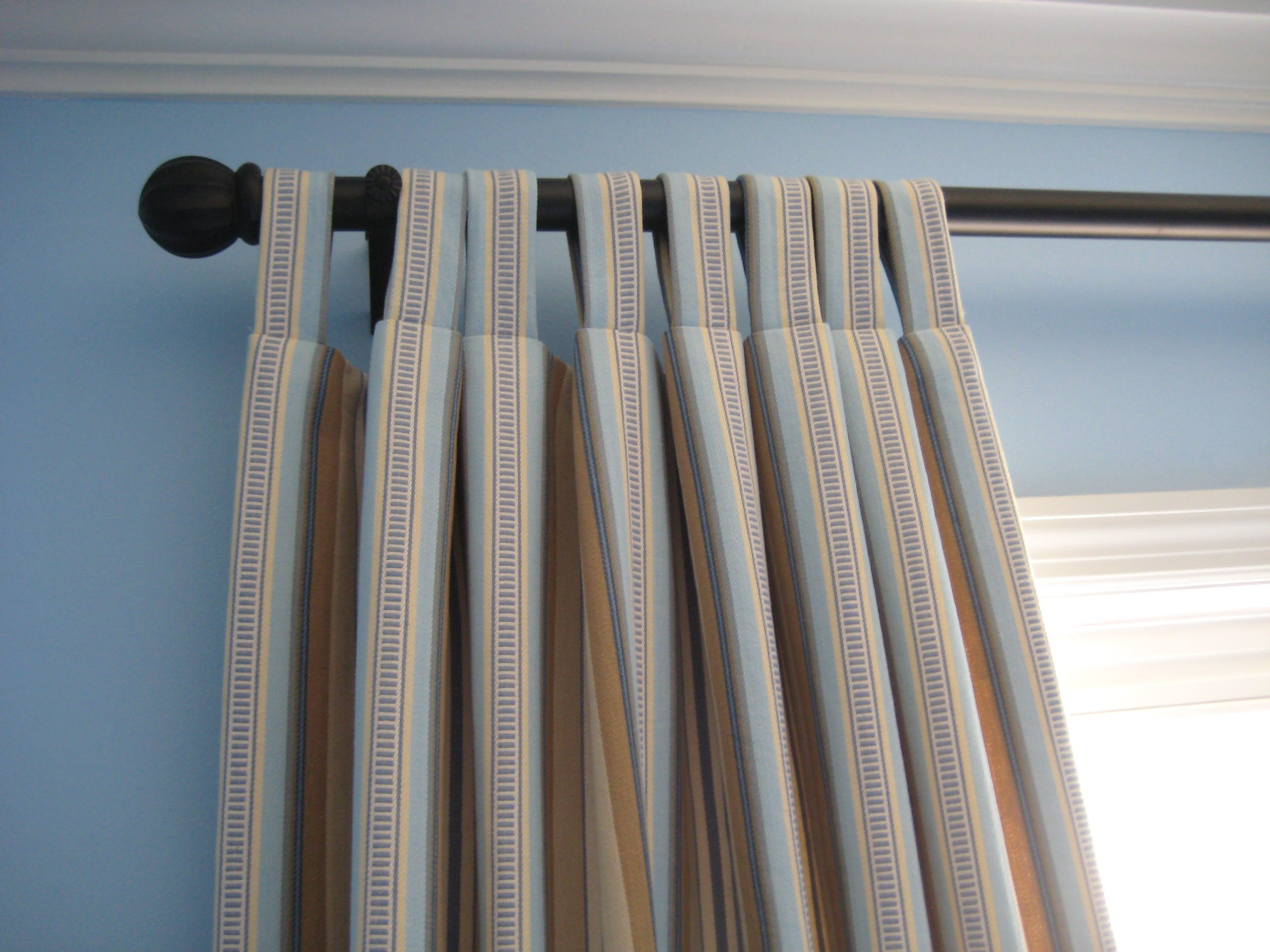
Other benefits of curtains are that they typically cover the space where the window meets the wall and where the sash meets the frame: two main areas for drafts. Curtains (or drapes as they are sometimes called) can be made in a heavy fabric that helps to insulate the interior from drafty windows. Plus they can also be lined in a blackout fabric that will reflect sunlight back out the window and darken rooms.
Some reasons not to choose curtains are:
Blinds are a popular option for energy efficient window treatments for their streamlined, more modern look.
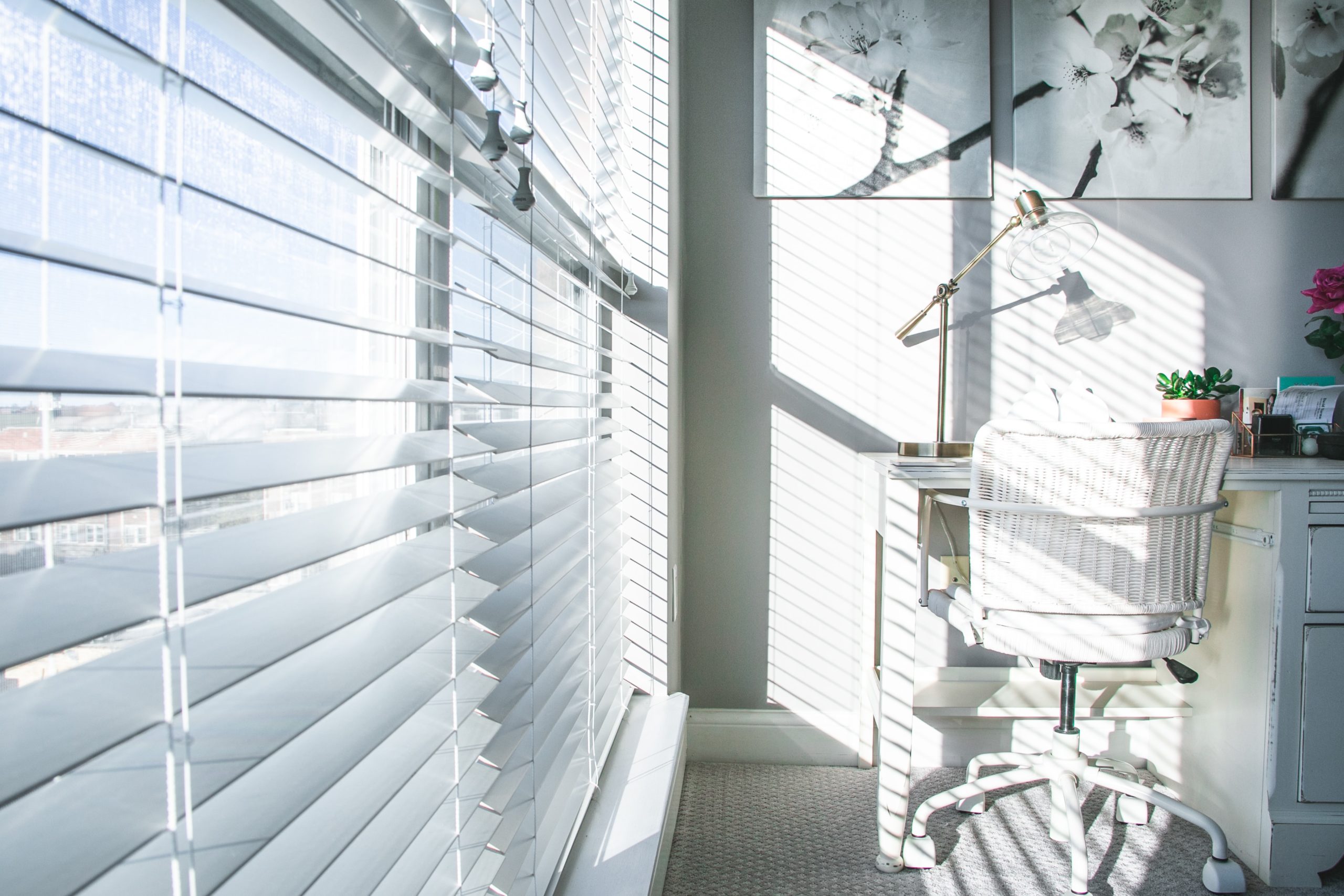
According to GearPost’s Buying Guide, there are nine types of blinds available today:
Window film is an energy efficient window treatment made from PET, a common plastic used in many household items and other types of film. Using advanced technology, ComforTech™ Ceramic Series film is treated with nano ceramic particles to reflect and absorb light. You apply the film to the inside of a window to block heat and harmful UV rays while still letting in light.
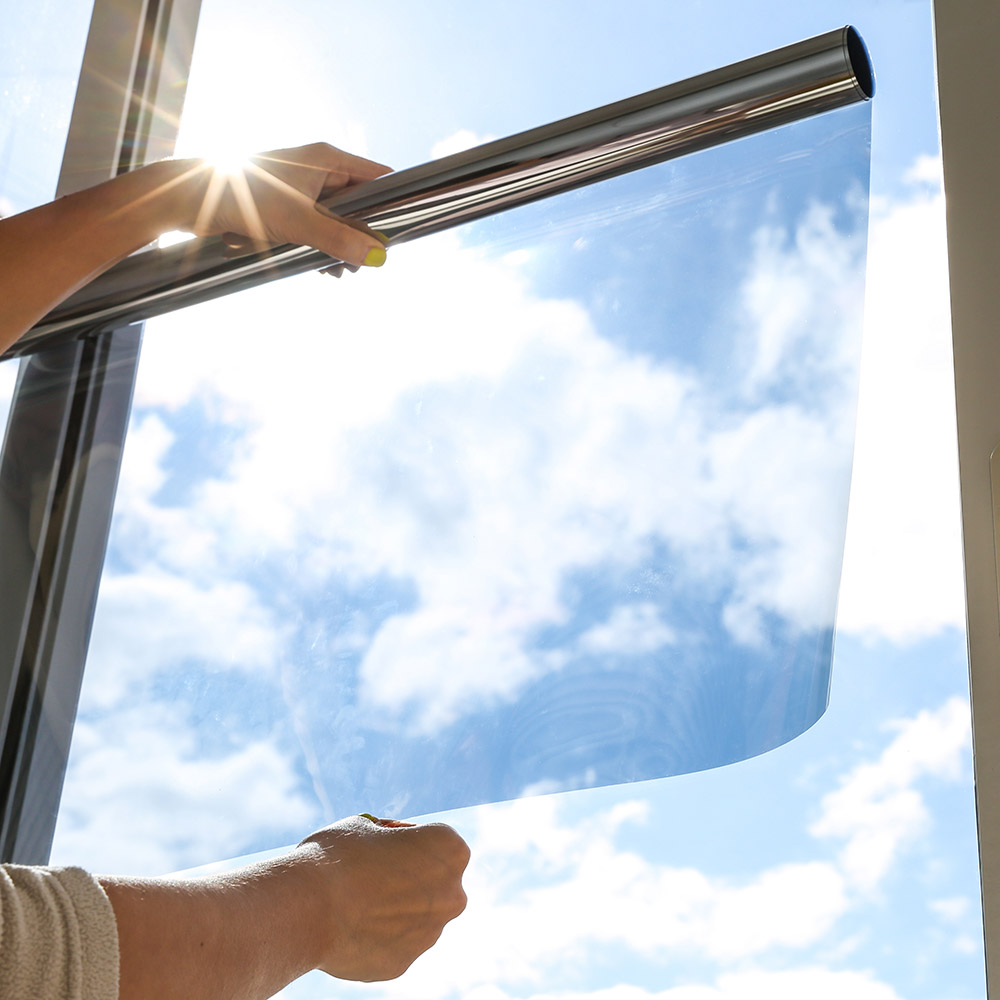
A better way to reduce heat is with solar control window film like Concord’s ComforTech™ Ceramic Series. ComforTech™ rejects or absorbs solar energy, keeping it from heating up your space. We offer a range of films that reject 51% – 82% depending on the shade you choose. As you can see in the table below, the darker the film, the more solar energy is rejected.
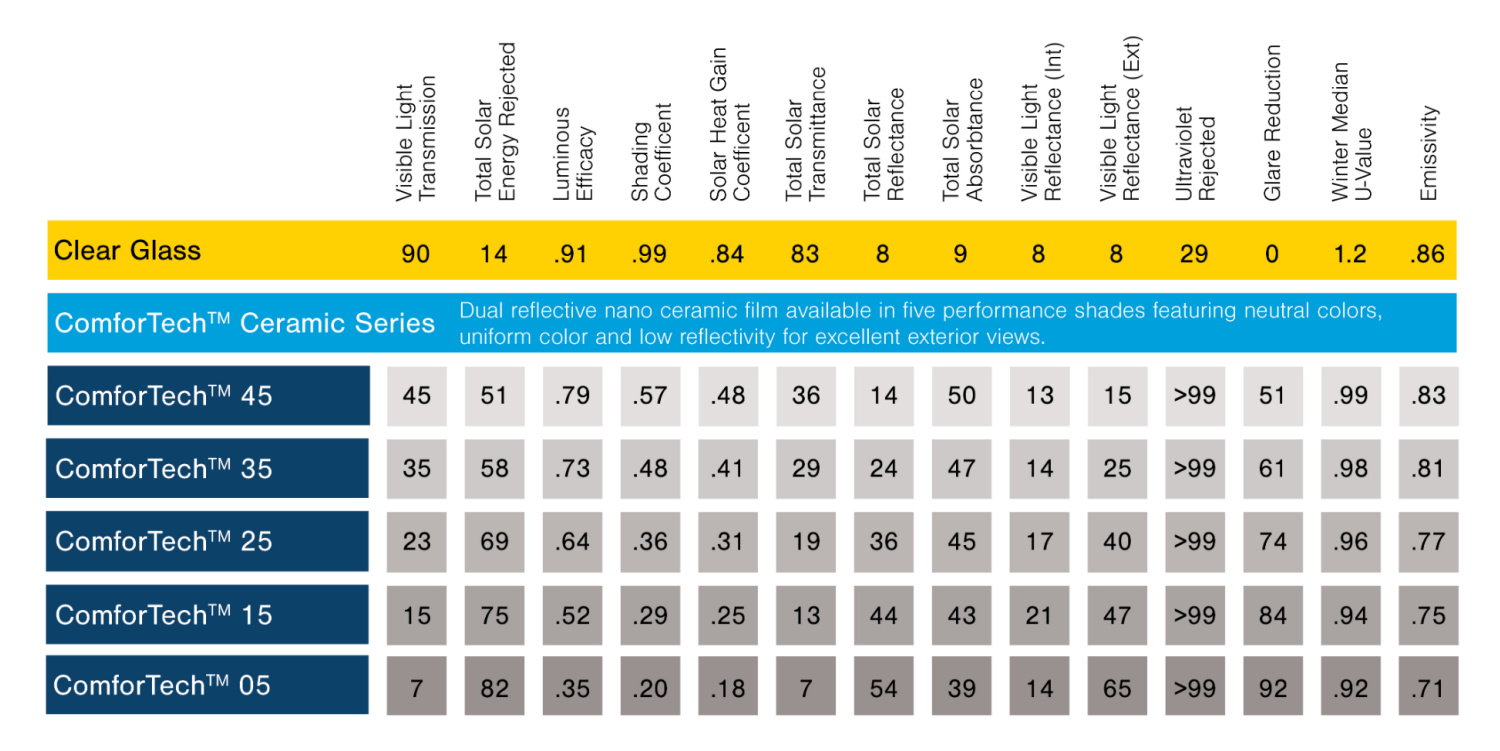
Installing ComforTech™ on the interior of your windows will significantly improve the livability and comfort of your rooms.
Upgrade your windows at a fraction of the cost of replacing them with ComforTech™ Ceramic Series window film. Our film will block or absorb up to 82% of the energy from the sun. This will dramatically improve the comfort in your home. Give your AC a break and live more sustainably and efficiently with Concord Window Film!
In addition to energy savings, window film offers other benefits including climate comfort, glare reduction, UV protection, fade control, and added daytime privacy.
If you are ready to experience how window film can help you enhance the comfort of your home, visit www.windowfilm.com today. It’s like putting a pair of sunglasses on your windows!